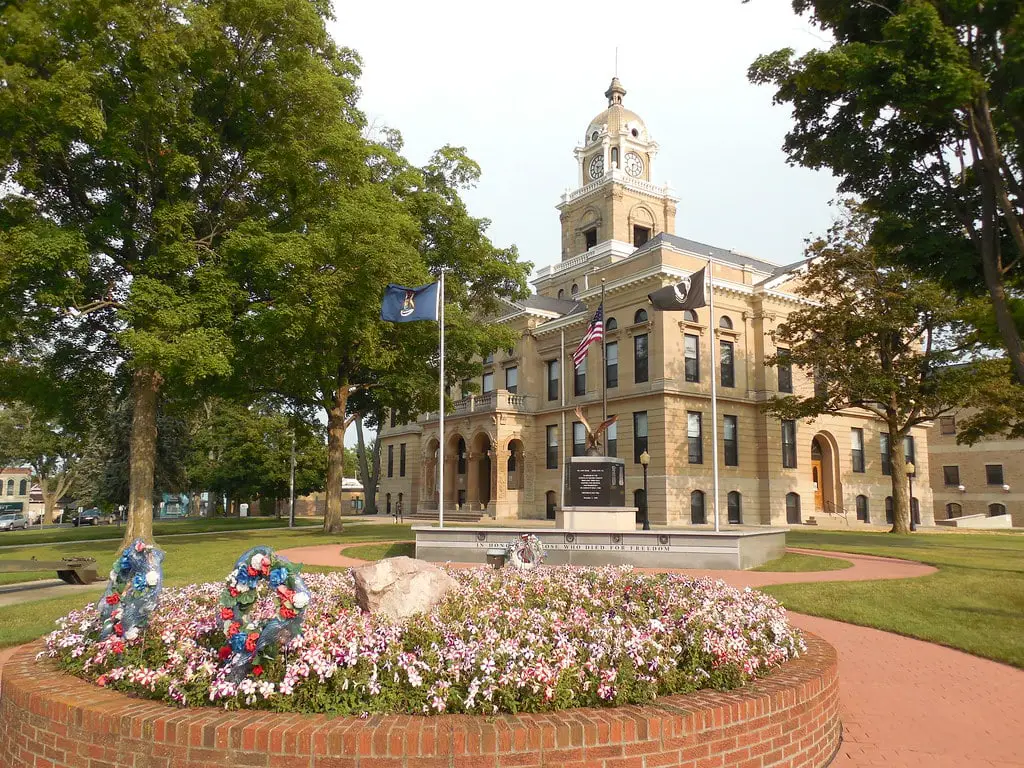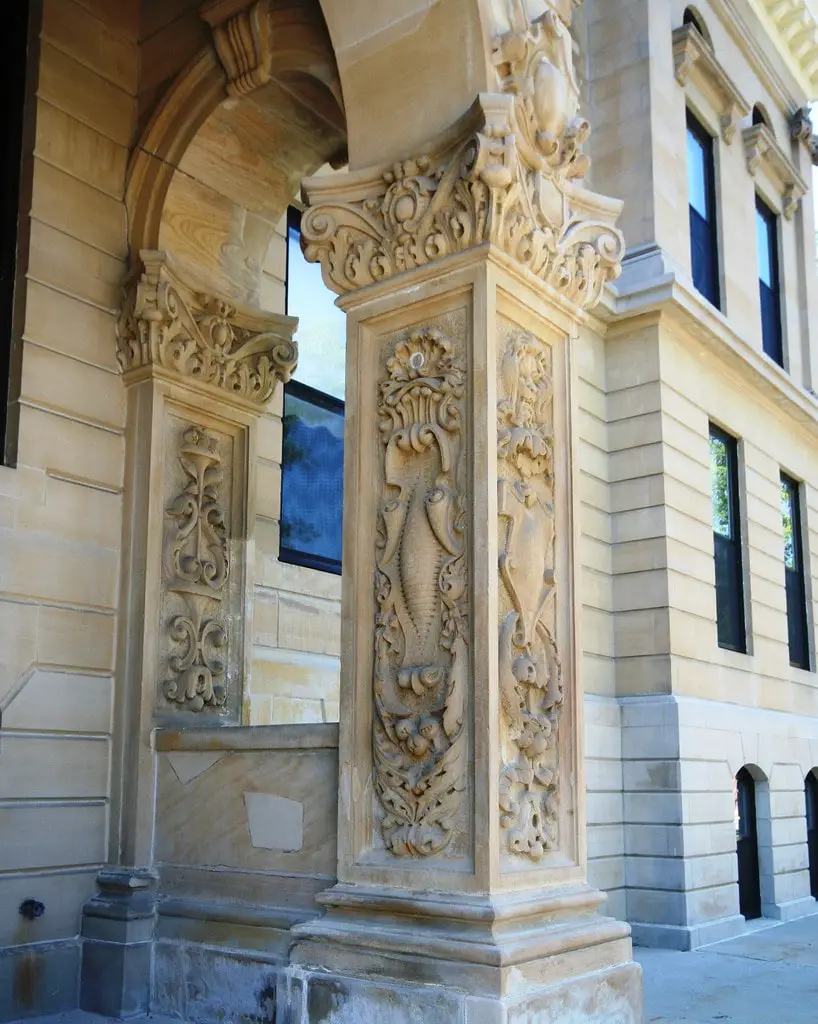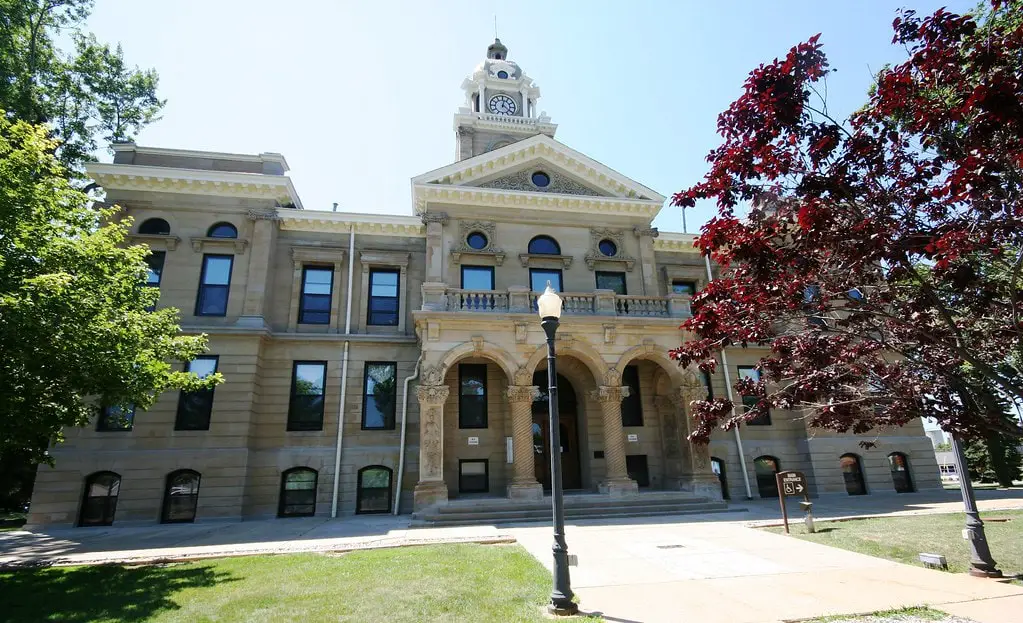A Beacon of History in Ithaca, Michigan
Nestled in the heart of Ithaca, Michigan, the Gratiot County Courthouse is a monument to the region's rich history. This grand Neoclassical structure, completed in 1900, carries over a century's stories within its beige sandstone walls.
The courthouse's journey began when Gratiot County was laid out in 1831. It was not until 1843, however, that settlement truly started with the establishment of a Lutheran mission near the current location of St. Louis.
In 1856, Gratiot Center, later renamed Ithaca, was chosen as the county seat, housing its first courthouse in a two-story log cabin. Over the years, this humble abode was replaced by larger structures, each reflecting the county's growth and progress.

When 1900 rolled around, voters approved the construction of a new courthouse, a structure that would symbolize the county's aspirations. Jackson-based architect Claire Allen drew the plans, and construction began in earnest.
However, the path was not always smooth - disputes over costs and lawsuits temporarily halted the building process. Eventually, A. W. Mohnke of Grand Rapids took over the construction, completing the courthouse at a final price of $75,000. Today, the courthouse still serves as a bustling hub for county offices and court proceedings, carrying on its legacy of service to the community.
An Architectural Marvel
The Gratiot County Courthouse is more than just a government building. Its distinctive architectural style and design make it a significant part of Michigan's architectural history.
The 2.5-story structure sits on a half-basement, measuring 36 by 60 feet. Dominating the skyline, a multi-stage clock tower complete with a belfry makes the courthouse an unmistakable landmark in Ithaca.

The courthouse's exterior is beige sandstone, but the intricate details captivate the eye. An unusual decorative arched and twisted column surrounds the front entrance, while the interior is anchored by a central dome dominated by oak and marble.
Despite the passage of time and inevitable wear, the building remains in relatively original condition, a testament to the craftsmanship and care that went into its construction.
A Testament to Time: Renovations and Restorations
The courthouse's history wasn't without its share of tribulations. In 1978, a fire caused substantial damage to the second floor, necessitating a considerable restoration effort. Despite this setback, the courthouse symbolized the county's resilience.
Further change arrived in the 1990s, with the construction of an additional "connector building" and renovations made to the original 1902 courthouse. The courthouse maintained its core function through all these transformations, serving as the hub of county administration and court proceedings.

The Lifeblood of the Community
The Gratiot County Courthouse is not just an impressive architectural marvel or a beacon of history - it's also the lifeblood of the community. It's a place where important decisions are made, justice is served, and the county's administrators work tirelessly to improve life for the community's residents.
The Future Is Bright in Gratiot County
The Gratiot County Courthouse serves as a reminder of where the county has come from and a symbol of where it's heading. It was named after US Army Captain Charles Gratiot and established in the mid-1800s when agriculture was the backbone of the county's economy.
Gratiot County is embracing the future today, with wind development bringing economic prosperity and over $500 million invested in the county since 2012.
As Gratiot County continues to grow and evolve, the courthouse will remain a steadfast symbol of its past, present, and future, standing tall and proud in the heart of Ithaca, Michigan.

